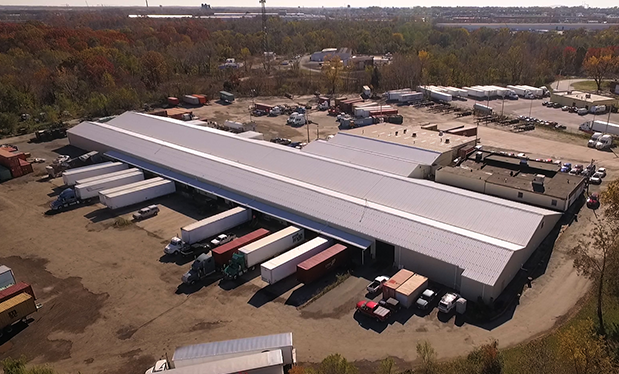It is well-known in the safety community that for companies to implement effective safety programs, they must have a safety culture. And who can deny having a solid culture of safety is vitally important in the roofing industry? The Occupational Safety and Health Administration (OSHA) uses the term "safety culture" frequently as something to which employers should aspire. And OSHA has used its "good faith reduction," which is a recognition of an employer's effort to implement effective safety and health management systems, as a determinant for increasing, decreasing or vacating citation-related penalties.
Here's where the confusion begins. It is easy to infer that culture means having an effective safety and health management system. As an employer, it would be reasonable to ask: "How good is my company's safety culture, and is it good enough to warrant a break if my company were cited by OSHA?"
In other words, does the commitment you make to creating a safe workplace (developing a safety program, hiring a safety director, conducting training, providing proper incentives, etc.) rise to the level of a safety culture strong enough to reduce a penalty? Can you measure culture and if so, what are the metrics?
What is culture?
To explore the concept of culture, let's start with defining it. Edgar Schein, professor emeritus at the Massachusetts Institute of Technology's Sloan School of Management and the Society of Sloan Fellows Professor of Management Emeritus, widely is recognized as an expert on culture. His research shows how national, organizational and occupational cultures influence organizational performance.
He defines culture as "a pattern of shared basic assumptions that the group learned as it solved its problems of external adaptation and internal integration, that has worked well enough to be considered valid and, therefore, to be taught to new members as the correct way to perceive, think, and feel in relation to those problems." This is a lot to digest. Let me break it down.
First, "a pattern of shared basic assumptions that the group learned as it solved its problems of external adaptation and internal integration" means as a group of people try to fit (adapt) into their world, whatever that world is (a market, society, industry, etc.), the group makes assumptions based on the success of previously made decisions and integrates these "ways of doing things" into the group.
Second, "… that has worked well enough to be considered valid and, therefore, to be taught to new members …" means once the original group figures out the ways to do things, it makes sure newcomers know these rules.
And third, "… as the correct way to perceive, think, and feel in relation to those problems" means a culture is one where a group of people wholeheartedly believes in these rules as the way to perceive, think and feel about their interactions with the external and internal occurrences they encounter as a group and as individuals.
You might agree that culture, given this framing, is the culmination of a complex, evolving, group-shaping survival effort. And cultural development takes years.
Upon researching culture, I concluded it isn't valid for someone outside a company to assess a company's safety culture even if the person visited the company for a couple of days. In fact, I now would argue for an established organization, it is difficult for people inside a company to clearly articulate and/or identify its culture.
Schein goes on to describe culture as having three levels: Artifacts, Espoused Values and Basic Assumptions.
Artifacts are those things one can observe when encountering a culture. The challenge with drawing conclusions from artifacts is they're only a representation of the culture and easily can be misunderstood.
For example, when someone walks into your place of business, what does he or she see? Is the reception area clean and orderly or the opposite; are there awards and plaques on display or dirty tools in sight; is there a professional receptionist or an employee on light duty who has poor manners? What conclusions are they drawing about your company? Are they correct?
Espoused values are a company's spoken philosophies, sometimes expressed as core values. An organization will promote and talk about how it works. For example, salespeople will espouse company values to align with potential customers' expectations, allay their fears and, with luck, create a sale.
Basic assumptions can be described as why things are done the way they are in an organization. If you can get to this level of understanding, you can see things through the organization's lens, know what behavior is acceptable and, importantly, how to feel about the organization in the correct way. Interestingly, basic assumptions are so taken for granted they often operate at the subconscious level. It's not that they can't be changed as new people enter and/or problems are solved, but they don't change easily or quickly.
Safety as culture
Now, let's look at safety in terms of Schein's culture framework. A safety program document is an artifact; the things you say about it (such as safe roofing is a core value) are espoused values; and what happens daily (and why) stems from basic assumptions.
For example, say you espouse safety is the No. 1 priority (espoused values) and even have posters reinforcing it (artifacts), but if your foremen believe that when hours are short, faster production becomes more important, potentially compromising safety (basic assumption), there is misalignment between what is said and shown versus what is done.
Let's say you suspect this misalignment is happening and you want your company's culture to change to safety being the No. 1 value regardless of how it affects production times. Where and how do you start?
First, look for misalignment signals. For example, have you tried to implement this new philosophy but it isn't sticking? Change is difficult in the best of situations; however, culture misalignment cues come with an emotional response. People will say they don't "get it"; they're confused; they complain; they talk behind backs, etc.
Another clear misalignment signal is safety statistics that aren't improving; things improve for a time but behavior reverts to the way it was. If you're seeing things like this, finding the source of the problem will be difficult. It is a worthwhile effort to talk to your employees and get their input. But getting employees to tell you the unvarnished truth is challenging, and the information gained can be misleading. And the larger the organization, the tougher it can be to see basic assumptions driving behavior because as an organization grows, messages from upper management often are not well translated in the field.
A useful tool
NRCA has partnered with the United Union of Roofers, Waterproofers and Allied Workers, and The Center for Construction Research and Training (CPWR) to develop a Safety Climate Assessment Tool for Small Contractors (S-CATsc). Under a grant from the National Institute for Occupational Safety and Health, CPWR worked with employer, employee, government and academic groups to develop it. You can access the small contractor version by clicking here.
Safety climate is defined as an employer's and workers' shared views about how safety is valued and reinforced. This tool can greatly add to understanding what is going on in your company, what works and how to improve.
The S-CATsc lets companies assess their status on the following eight leading safety climate indicators:
- Demonstrates management commitment to safety
- Promotes and incorporates safety as a value
- Ensures accountability at all levels
- Improves supervisory leadership
- Empowers and involves employees
- Improves communication
- Provides training at all levels
- Encourages owner and client involvement
Each of these indicators looks at qualitative issues regarding safety and not just the typical quantitative measures. This is not to say quantitative measures aren't important, but typically they don't provide the underlying reasons why accidents occur (the basic assumptions effect). As such, they're only a part of the equation for proper assessment.
Consider fall protection, for example; you can make sure you have the proper equipment, train workers how to use it, set the rules for use, and reinforce it with discipline and/or incentives. These are all metric-based (management) efforts. You can do everything in your power to properly support the effort for a worker not to fall. But if a worker believes he or she won't fall or otherwise doesn't want to follow the rules, how do you get him or her to care enough to do the opposite? This is where employing leadership efforts come in to play.
The eight indicators help you rate how well your company is doing from a management perspective and, importantly, help identify ways to improve the way you use leadership methods to make safety the No. 1 priority. This often is where the gap in messaging occurs. The basic assumptions built up and reinforced (rightly or wrongly) over time end up conspiring against change even if that change otherwise makes perfect sense. Remember basic assumptions are imbedded as the way to "perceive, think and feel" about how to do things.
The S-CATsc can provide an objective look at your company's "reality." For example, rating how well your senior team demonstrates its commitment to safety could be telling. The S-CATsc allows you to do this and offers suggestions to improve if needed.
The two-page questionnaire provides several questions about each indicator and asks you to rate how your company performs. For example, for the statement "My company frequently visits job sites and interacts with employees about safety," you can choose from one of the following responses: Already does this well; Could do this better; Would need help doing this; Is not able to do this; or I don't know.
After you complete the survey you can use the two-page "Summary of Ideas for Improving Leading Indicators to Strengthen Jobsite Safety Climate" also provided in the document to provide ideas to make changes. If you chose "Could do this better" to the example statement, the suggestion would be management should be visible to employees and follow good on-site safety practices.
Using the S-CATsc can provide an understanding of your company's safety climate. Properly assessing climate can help indicate why cultural head-bumping occurs when you want to change from a production to a safety focus. It offers a look at safety from a leadership perspective (why someone would care), providing a balance to managing safety results (the metrics) where attention, too often, is solely spent. Understanding how to use this tool will allow you to connect in a meaningful way with your middle managers and field staff to make sustainable changes and improve results.
Commit to a culture
Measuring safety effectiveness is tricky and can lead to wrong conclusions. Safety metrics such as lost workday incident rates only provide a glimpse into the whole picture and cannot be relied upon as proof of a good or bad safety program much less a culture.
However, balancing safety management and leadership activities allows you to use data objectively, involve staff appropriately and communicate more effectively. The S-CATsc is a useful tool that provides an otherwise hard-to-see reflection of safety culture alignment. Knowing culture is composed of basic assumptions, espoused values and artifacts gives an appreciation for its depth and how challenging it is to change it. With this perspective, understanding alignment can unlock ideas about what you can do to attain your safety goals.
Tom Shanahan, MBA, CAE, is NRCA's vice president of enterprise risk management.
To read more about this topic, see:
"Safety: A core value," July 2015 issue
"A culture of safety," July 2010 issue



